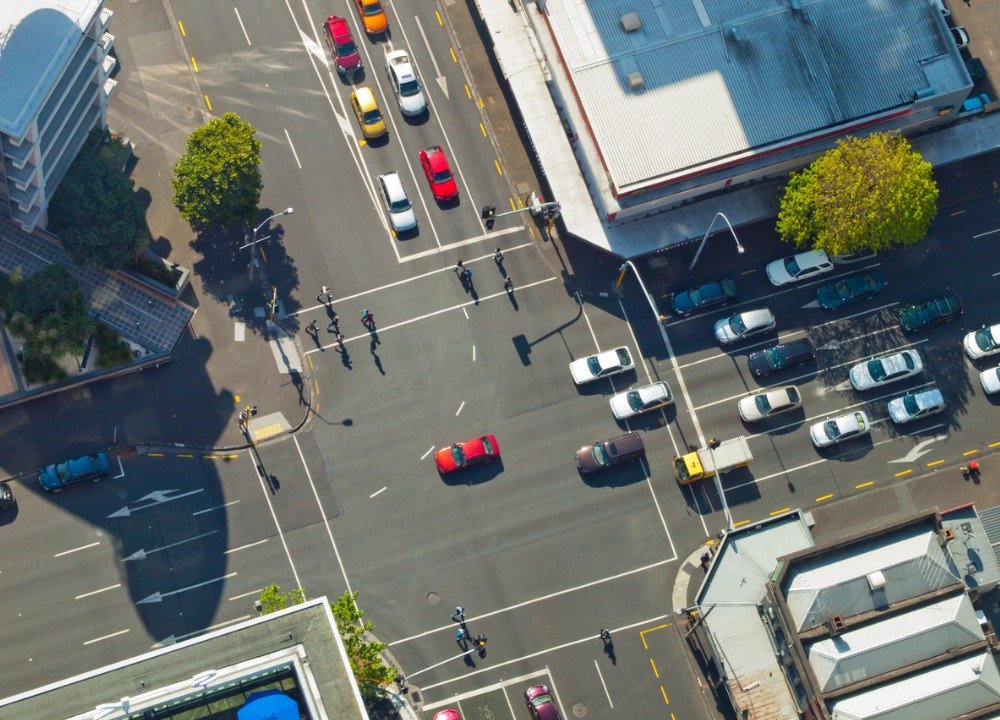How To Give Way At Intersections | Everything You Need To Know
It’s a staggering fact that intersection collisions account for roughly 20% of road fatalities [1] in Australia. Unfortunately, many of these are due to drivers not paying attention to signposts among or not giving way to pedestrians or other cars when they should.
We’re here to help you brush up on the rules of giving way at intersections to help prevent a costly or potentially life-threatening crash.
Understanding Intersection Rules
It all starts by re-familiarising yourself with the common signs at intersections:
STOP sign – Indicated by a red octagonal sign and solid line across your lane, a STOP sign means you must come to a complete stop before entering the intersection and allow any other traffic to pass through before you choose a safe gap to continue. You need to ensure you’re stopping as close the line as possible without going over so you have the best view of oncoming traffic possible. If there’s no solid line at a STOP sign, you should stop as close to the corner of the intersection without entering it.
Give Way sign – At a give way sign, you’re not required to come to a complete stop however you must always allow other traffic passing through the intersection to continue before you enter. This includes anyone travelling in, entering or approaching an intersection, including pedestrians.
Giving Way at T Intersections
If you’re travelling on a road which comes to an end and want to turn left or right into a T Intersection, you must always give the right of way to both cars and pedestrians travelling on the road you’re turning onto, unless otherwise signposted.
Give Way to Pedestrians at Intersections
When you’re turning at an intersection, you need to make sure you’re always keeping an eye out for pedestrians and allow them to finish crossing before you proceed. Pedestrians actually have the right of way over any vehicle when crossing the road a vehicle is turning into.
For example, if you’re turning left or right onto a street and someone is crossing or approaching to cross that street, you must stop or slow to allow them to cross. When turning right, this could mean you need to wait in your lane prior to entering the intersection to avoid getting caught in the middle and risking collision with oncoming traffic.
Give Way Rules When There Are No Signs at an Intersection
Who gives way at intersections if there are no signs? It’s uncommon to find yourself at an intersection without any signposts in city areas, however if you’re taking a day trip to suburban or rural areas, you’ll likely face this situation. Don’t panic, because giving way at an intersection with no signs is easier to navigate than you think.
Generally, if you’re turning across another vehicle’s path, you must give way. This means when turning at an intersection you’re always giving way to oncoming vehicles continuing straight, oncoming vehicles turning left and any vehicle on your right.
When you’re preparing to turn right and an oncoming vehicle approaches to turn right also, you can both turn at the same time passing in front of each other.
One important thing to remember when using intersections is that it’s illegal to be caught idling in the middle of an intersection, whether there are traffic lights or not. So, if traffic is heavy and you’re thinking of being cheeky and sneaking through an intersection before the light turns red, you could be hit with a hefty fine.
You must always make sure that the lane you are entering on the other side of the intersection is clear and safe for you to enter before you move into the intersection. This is so you don’t get caught in the path of other oncoming traffic, because that’s a collision just waiting to happen!
Car A (blue) must give way to car B (green).
image source – RMS
References
Road Safety Commission, Intersection Crashes, The Government of Western Australia


